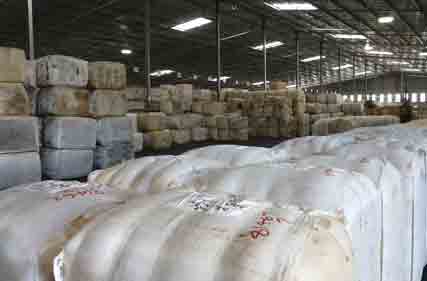 The wool market faces its last week of selling before the recess, and this week may be the week that shapes the next 3 months of market direction. The wool market faces its last week of selling before the recess, and this week may be the week that shapes the next 3 months of market direction.
With the pressure of 61,054 bales estimated to be offered, I must say the exporters are certainly expressing negative sentiments. At this point in time, there is some doubt that the offering will be even close to achieving the 61,054 estimates projected. The AWTA test house signalled earlier this week that they have been struggling to keep up with the volume of lots to process for next week’s sale. Secondly, the last two weeks have seen a 67c (4.5%) fall in the EMI which in turn may change the sentiment for wool producers to offer in next week sale. As the eternal optimist I must concede that despite the result of next week’s sale, these avoidable market crushing events will be waiting for us at this time next year unless we change the paradigm. On top of the above-mentioned factors, the markets are still grappling with increased time of their money cycles which have increased from 4 to 9 Weeks. Slow and unreliable shipping schedules are also plaguing the exporter and processors. If that is not enough doom and gloom the back story of the spread of Foot and Mouth Disease (FMD) into cows in Bali. This has been met with elevated border controls by the Federal Government. A FMD outbreak in Australia would be devastating to the Australian Livestock sector with cattle, sheep, pigs and goats all able to be affected. The AWEX EMI closed on 1407c – down 23c at the opening Auction sales in Australia last week. With the negative sentiment spilling over from last week, the market opened cautiously as exporters were trying desperately to fill their orders as cost efficiently as possible. However the show floor chatter of last week’s Woollen Mill fire seemed to be replaced by rumours of a slowing in the Chinese Economy. The currency exchange rate continued to weaken which softened the full impact of wool markets correction. Tuesday’s market highlighted the centre offering disparity as the NMI fell 26c, the SMI only falling by 3c. This is due primarily to the quality of the selection and in part the quantity of the centres offering. Melbourne at this time of the year has been able to gather large quantities of best style and best specified lots along with reasonable quantities of Certified Integrity Schemes Non Mulesed wool. Sydney on the other hand have been grappling with a substantial percentage of lesser style and specified lots as a result of the season conditions. Wednesday saw the reversal of the centre difference with Sydney NMI holding firm, whilst the Melbourne SMI experienced an 18c drop. Merino Fleece as I mentioned in the above, did different things in different centres on different days. After a rocky start on Tuesday where the Northern markets lost between 20 & 50c, Wednesday produced a slightly better day for selling. 18μ and finer lots added 5-18c whilst the 18.5μ and coarser lots fluctuate between no-change to adding 4c, with the 20 MPG dropping 15c on Wednesday. Unfortunately after holding within 20c of the previous week’s level, the southern region saw falls between 7c and 43c across the merino MPG’s on Thursday. It was evident that Superfine Fine fleece with more than 2.5% VM are becoming more difficult to sell each week as the quantity remains in excess of the market demand. Merino Skirtings seemed more stable than the fleece with magnitude of small falls across the centres determined by the VM% on Tuesday where skirts lost 5-20c only to recover some of those losses on Wednesday. Crossbreds delivered slight fluctuations this week with a range of -7 to +5 from 28-32 MPG’s whilst the 26 MPG added 14c Merino Cardings were also only slightly impacted by the combing wool process this week. Average losses for the eastern state MC’s represented 9.5c with Wednesday’s closing levels indicating some renewed demand in this sector. |
| Unfortunately the sales immediately after the financial year end normally have larger than average offerings. For various reasons, some wool producers have opted to sell in the new financial year which seems very prudent unless it continually supresses the market sentiment.
I seem to recall about 8 or 9 years ago, a senior officer of a peak wool organisation calling out the practice of large offering saying it was “not orderly marketing”. Sadly nothing has changed with the exception that the wool production is substantially less than when that story hit the headlines. Unfortunately, the reoccurrence of this phenomena is directly due to the industry’s inability to recognise that change is needed for the problem to go away. The saying “unless you’re the lead dog, the view never changes” rings true here. We know that the end of financial year is a fixed point in time that at times changes decisions on commercial activities. We also know that traditionally the July three week recess exists, however in my view, a simple movement of this recess 2 weeks either way may alleviate the issue of the offering bottleneck resulting in market crushing results for wool producers. ~ Marty Moses, Moses and Son |
